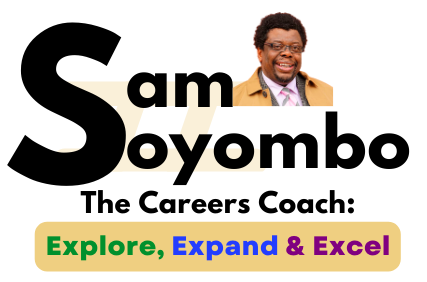1. Why is making a great first impression with applications essential?
see all the answers below
2. What key elements should I focus on when crafting an impressive CV?
3. What are common CV mistakes to avoid, and why address them?
4. Why is a compelling cover letter important, and how to create an engaging introduction?
5. What tips maximise impact when writing a cover letter?
In today’s competitive job market and academic landscape, making a great first impression with your applications is essential. Your written communication, including your CV, cover letters, and personal statements, plays a critical role in capturing the attention of employers or learning providers. To help you navigate this process and stand out, we have compiled a comprehensive guide on making a great first impression with your applications.
In this blog post, I will take you through the essential steps to ensure your applications leave a lasting impact. We will start by delving into the art of crafting an impressive CV. I will provide tips on tailoring your CV to highlight your relevant skills and experiences, using clear and concise language, and organising information in an easy-to-read format. We will also discuss the importance of showcasing your achievements, paying attention to language and tone and avoiding Common Mistakes.
Next, I will explore the art of introducing and writing compelling cover letters and personal statements. We will guide you on how to customise each cover letter to the specific job or educational opportunity you’re applying for, how to research the employer or institution to tailor your application materials, and how to develop impactful personal statements that showcase your personality, motivation, and suitability for the program or institution.
I will emphasise the significance of conducting thorough research on the employer or institution before applying and the value of showcasing your achievements and aligning your skills and experiences with their requirements. Additionally, we will provide tips on presenting yourself professionally and maintaining a positive and confident tone in your writing.
Seeking feedback from trusted individuals, following instructions provided by employers or institutions, and ensuring attention to detail are other crucial aspects we will address in this blog post. By incorporating these steps into your application process, you can significantly increase your chances of making a good impression and securing the desired job or educational opportunity.
Why is making a great first impression with applications essential?
It sets the tone, captures attention, and increases success chances in a competitive market.
Remember, making a great first impression combines careful preparation, tailoring your materials to the specific opportunity, and presenting yourself as a motivated and qualified candidate. By following our guidance, you will be well-equipped to tackle the application process confidently and significantly increase your likelihood of success. So let’s dive in and learn how to make a solid first impression with your applications!
Crafting an Impressive CV

Crafting an impressive CV (curriculum vitae) is essential when applying for jobs or educational opportunities. Your CV is the first document employers or admissions officers review, so it’s crucial to make it stand out. Here are some expanded tips to help you create an impressive CV:
- Understand the purpose: Your CV summarises your qualifications, skills, experiences, and achievements. It should effectively showcase your suitability for the position or program you’re applying to. Before starting, ensure you understand the purpose of your CV and tailor it accordingly.
- Choose the proper format: Different CV formats are available, and you should select the one that best highlights your strengths and suits your industry. The most common structures include reverse chronological, functional, and combination. The reverse chronological format is widely used and emphasises your work history, while the functional layout focuses on skills and accomplishments. The combination format combines elements of both. Choose the design that best suits your background and effectively presents your qualifications.
- Start with a compelling personal statement: Begin your CV with a concise and impactful personal statement or a professional summary. This brief paragraph should highlight your essential qualifications, skills, and career goals. Make it attention-grabbing and tailored to the specific role or program you’re applying for. This statement sets the tone for the rest of your CV and provides a snapshot of your qualifications.
- Provide a clear and well-organised structure: Structure your CV with clearly defined sections, including personal information, education, work experience, skills, achievements, and other relevant areas such as certifications, languages, or volunteer work. Use headings and bullet points to improve readability and ensure each section flows logically.
- Tailor your content: Customise your CV to align with the specific requirements of the position or program. Highlight the skills, experiences, and qualifications most relevant to the role. Please read the job or program description carefully and identify the key attributes they seek. Then, incorporate those elements into your CV, placing them prominently where they will most likely catch the reader’s attention.
- Focus on achievements: Don’t just list your responsibilities; highlight your achievements in each role or academic endeavour. Use quantifiable metrics whenever possible to demonstrate the impact you made. For example, instead of saying you “managed a team,” specify that you “managed a team of 10 employees and improved productivity by 20%.” It shows the value you brought to the role and gives the reader a clearer understanding of your capabilities.
- Use concise and impactful language: Write your CV clearly and concisely. Avoid jargon and acronyms that may not be familiar to all readers. Use action verbs to start your bullet points, such as “developed,” “led,” or “implemented,” to convey a sense of accomplishment and initiative.
- Proofread and edit: Thoroughly proofread your CV for grammar, spelling, or punctuation errors. A well-polished document shows your attention to detail and professionalism. Use spell-checking tools and ask a trusted friend or family member to review your CV. Fresh eyes can often catch mistakes or provide suggestions for improvement.
What key elements should I focus on when crafting an impressive CV?
Purpose understanding, choosing the right format, compelling personal statement, clear structure, tailored content, achievement focus, concise language, thorough proofreading.
Following these tips, you can craft an impressive CV that effectively showcases your qualifications and sets you apart from other applicants. Remember to tailor your content, highlight achievements, and use clear and concise language to create a solid first impression.

What Not to Include on a CV: A Guide to Avoiding Common Mistakes
Crafting an effective CV is essential when applying for jobs or educational opportunities. Presenting your qualifications, skills, and experiences clearly and concisely is crucial. However, equally important is knowing what not to include on your CV. In this blog post, we will discuss common mistakes to avoid and provide guidance on what information should be omitted from your CV. By understanding these pitfalls, you can ensure your CV showcases your strengths and increases your chances of making a positive impression on employers.
- Personal Information: While it’s essential to provide your contact details, such as your name, phone number, and email address, you should omit certain personal information from your CV. Avoid including details like your date of birth, marital status, religious beliefs, or a photograph unless explicitly requested by the employer. These details are generally irrelevant to your qualifications and can lead to potential bias or discrimination.
- Irrelevant Work Experience: When listing your work experience, focus on positions directly relevant to the job you’re applying for. Including every job you’ve ever had, regardless of relevance, can clutter your CV and distract you from your most significant accomplishments. Instead, highlight experiences demonstrating your skills, achievements, and responsibilities aligning with the desired role.
- Excessive Details: Keep your CV concise and focused by avoiding excessive details. While providing the relevant information is essential, avoid lengthy paragraphs or extreme bullet points. Use clear and concise language to describe your responsibilities and accomplishments. Be selective and highlight the most impactful experiences that showcase your qualifications and make you stand out as a candidate.
- References: It’s unnecessary to include references on your CV. Employers typically request references separately in the application or during the interview process. Including references can take up valuable space on your CV and should be saved for when they are specifically requested.
- Unrelated Hobbies or Interests: While it’s great to showcase your personality and interests, it’s essential to be selective about the hobbies and interests you include on your CV. Only include activities that are relevant to the job or demonstrate transferable skills. For example, highlighting your experience with social media management or graphic design could be beneficial if you’re applying for a marketing role. Avoid listing hobbies or interests that are unrelated or potentially controversial.
- Salary History: Including your salary history on your CV is generally unnecessary. Salary discussions are typically held during the interview or negotiation stage of the application process. Sharing salary history may limit your negotiating power or give employers preconceived notions about your worth. Focus on highlighting your qualifications and skills rather than your previous salary.
- Unprofessional Email Address: When providing your contact information, ensure that your email address is professional and appropriate for a job application. Avoid using email addresses that contain nicknames, slang, or unprofessional language. Create a separate email address specifically for job applications, using your name or a combination of your name and initials.
- Generic Objective Statements: Objective statements have become less common in modern CVs. Instead, consider incorporating a professional summary or profile section at the beginning of your CV. This section should provide a concise overview of your qualifications, skills, and experiences tailored to the specific job you’re applying for. Avoid generic and vague statements that do not add value to your application.
What are common CV mistakes to avoid, and why address them?
Avoid irrelevant personal info, work experience clutter, excessive details, including references, irrelevant hobbies, salary history, unprofessional emails, and generic objectives. Crucial for maintaining focus and standing out.
A well-crafted CV is a vital tool in your job application process. By avoiding common mistakes and knowing what not to include, you can ensure your CV stands out and effectively showcases your qualifications. Remember to omit irrelevant personal information, focus on relevant work experience, keep your CV concise, and avoid including unnecessary details. Tailor your CV to each specific application and highlight your most impactful achievements. Following these guidelines increase your chances of impressing employers and landing the desired job.
Writing Compelling Cover Letters
In addition to your CV, a compelling cover letter is essential to your application. It provides an opportunity to showcase your motivation, demonstrate your understanding of the position or program, and highlight how your skills and experiences align with their requirements.
The introduction of a cover letter or personal statement plays a crucial role in capturing the reader’s attention and setting the tone for the rest of the document. The opening paragraph should engage the reader and interest them in learning more about you. Here are some expanded tips on how to create a captivating introduction:
Start with a compelling hook: Begin your introduction with an effective hook that grabs the reader’s attention. It could be an engaging anecdote, a thought-provoking question, a surprising statistic, or a powerful quote. The theme should be relevant to the position or program you’re applying for and should immediately draw the reader in. Example: “Imagine standing on the precipice of a breakthrough, with the exhilarating fusion of creativity and technology propelling you forward. That is the world I envision—a realm where art and innovation converge to redefine human experiences.”
Showcase your passion: Express your passion and enthusiasm for the field or industry you’re applying to. Use strong and vivid language to convey your excitement and genuine interest. It will help create a connection between you and the reader immediately. Example: “I have always been captivated by the limitless possibilities of technology, and my passion for exploring its transformative power has been the driving force behind my journey as a software engineer.”
Provide context: Offer a brief background or context that relates to your interest in the position or program. Explain how your past experiences, academic knowledge, or personal journey have led you to pursue this particular opportunity. It helps the reader understand the significance of your application. Example: “As a marketing professional with a background in psychology, I have developed a deep understanding of consumer behaviour and the power of storytelling. I am eager to channel my expertise into digital marketing, where data-driven strategies and captivating narratives converge.”
State your purpose: Clearly state the purpose of your application and why you are writing the cover letter or personal statement. Make it clear that you are genuinely interested in the opportunity and excited to be considered. Example: “I am writing to express my strong interest in the marketing coordinator position at ABC Company. As an aspiring marketing professional, I am eager to contribute my skills and knowledge to a dynamic team that values creativity, innovation, and strategic thinking.”
Keep it concise: While making an impact with your introduction is necessary, keep it brief and focused. Aim for a paragraph or two to maintain the reader’s attention without overwhelming them with too much information upfront. Example: “In a world where technology is shaping the future of healthcare, I am thrilled to apply for the research internship at XYZ Institute. With a passion for medical advancements and a desire to make a meaningful impact on patient care, I am excited to collaborate with leading experts and contribute to groundbreaking research projects.”
Why is a compelling cover letter important, and how to create an engaging introduction?
Essential for showcasing motivation and alignment. Create an engaging intro with a compelling hook, passion showcase, context, clear purpose, and concise style.
Remember, the introduction sets the tone for your cover letter or personal statement. It should be engaging and passionate and convey your interest and purpose. By crafting a captivating introduction, you will capture the reader’s attention and create a solid first impression that encourages them to continue reading.
A well-crafted cover letter can significantly impact applying for a job or program. It lets you showcase your qualifications, express your genuine interest, and stand out. However, writing a compelling cover letter requires careful planning and attention to detail. Here are some essential tips that will help you create a cover letter that captivates the reader and increases your chances of success:
- Research the employer or institution: Before you begin writing your cover letter, conduct thorough research on the employer or institution. Visit their website, and read about their mission, values, and recent accomplishments. Understand their industry or field and the specific requirements of the job or program. This knowledge will enable you to tailor your cover letter and demonstrate genuine interest and enthusiasm.
- Address the recipient adequately: If possible, address your cover letter to a specific person rather than using a generic salutation like “To whom it may concern.” It demonstrates that you’ve taken the time to research the organisation and shows a personal touch. If the job posting or application instructions don’t provide a name, consider calling the organisation and politely asking for the hiring manager’s name.
- Start with a compelling introduction: Begin your cover letter with a solid, engaging opening paragraph. Clearly state the position or program you’re applying for and briefly explain your interest. Capture the reader’s attention and make them want to continue reading.
- Align your skills and experiences: In the body paragraphs of your cover letter, focus on how your skills and experiences align with the specific requirements of the position or program. Use specific examples and achievements to demonstrate your capabilities. Instead of merely stating that you have excellent communication skills, please provide an example of a project where your communication skills were crucial to its success.
- Be concise and focused: Keep your cover letter brief and focused. Stick to one page if possible and avoid unnecessary repetition or irrelevant information. Use clear and straightforward language to convey your points effectively. Remember, the cover letter complements your CV, not a repeat of it.
- Showcase your motivation: Use your cover letter to showcase your inspiration for the role or program. Please explain why you are interested in this opportunity and how it fits into your career or educational goals. Show enthusiasm and a genuine passion for what you’re applying for.
- Maintain a professional tone: While showcasing your personality and enthusiasm is essential, maintain a professional manner throughout your cover letter. Use polite and formal language, avoiding slang or overly casual expressions. Strike the right balance between professionalism and showcasing your unique qualities.
- Proofread and edit: Like your CV, proofread your cover letter carefully for errors or typos. Ensure proper grammar, spelling, and punctuation. Pay attention to formatting and consistency. A well-edited cover letter demonstrates your attention to detail and shows that you take the application process seriously.
Following these tips, you can create a compelling cover letter that effectively communicates your motivation, aligns your skills and experiences with the position or program, and captures the reader’s attention. Remember to conduct thorough research, maintain a professional tone, and proofread your letter before submitting it.
What tips maximise impact when writing a cover letter?
Research the employer, address properly, start with a compelling intro, align skills, keep it concise, showcase motivation, maintain professionalism, proofread thoroughly. Increases success chances.
Developing Impactful Personal Statements
Personal statements are critical when applying for educational programs, scholarships, or internships. They allow you to showcase your personality, motivations, and suitability for the program or institution. Here are some expanded tips for developing an impactful personal statement:
- Understand the requirements: Before writing your statement, carefully read and understand the needs provided by the institution or program. Please pay attention to any specific prompts or guidelines they offer. It will help you tailor your statement to meet their expectations.
- Start with a captivating introduction: Grab the reader’s attention from the beginning with a fascinating introduction. You can begin with an engaging anecdote, a thought-provoking question, or a meaningful quote. The opening should make the reader want to continue reading and provide a glimpse into your unique qualities.
- Showcase your personality: Use the personal statement to showcase your personality, values, and beliefs. Please share your personal experiences and passions and how they have influenced your aspirations and goals. Be genuine and authentic in your writing; it will help the reader connect with your story.
- Connect your experiences to the program: Draw connections between your experiences, skills, and achievements to the specific program or institution you’re applying to. Highlight how your background aligns with their values, curriculum, or research areas. It demonstrates your genuine interest and shows that you’ve done your homework.
- Provide specific examples: Instead of making broad statements, provide specific examples to support your claims. If you mention leadership skills, share a situation where you effectively demonstrated leadership and achieved positive outcomes. These examples add credibility to your statements and help readers visualise your experiences.
- Explain your motivations and goals: Clearly explain your motivations for pursuing the program or opportunity you’re applying for. Share your short-term and long-term goals and how this program will help you achieve them. Convey your enthusiasm and dedication to your chosen field of study or profession.
- Be concise and well-structured: Personal statements typically have word or character limits, so be straightforward and focused in your writing. Avoid repetition and stay within the provided guidelines. Use clear paragraphs and subheadings to ensure a well-structured statement that is easy to follow.
- Edit and seek feedback: After writing your statement, revise and edit it thoroughly. Check for grammar, spelling, and punctuation errors. Ensure the information flows logically and cohesively. Consider seeking feedback from trusted mentors, teachers, or friends who can provide valuable insights and suggestions for improvement.
By following these tips, you can develop an impactful personal statement that effectively showcases your personality, motivations, and suitability for the program or institution. Remember to tailor your message to the specific requirements, provide specific examples, and seek feedback to polish your writing.
REFLECTION FOR THE DAY
How can I master written communication to create a lasting impression with my job or educational applications?
Conclusion:
Mastering written communication is essential for making a lasting impression with your applications for jobs or educational opportunities. Your CV, cover letters, and personal statements play a critical role in capturing the attention of employers or learning providers. Following the steps outlined in this blog post can significantly increase your chances of standing out from the competition and securing the desired position or program.
Crafting an impressive CV involves tailoring it to highlight your relevant skills and experiences, using clear and concise language, and organising the information in an easy-to-read format. Showcasing your achievements and paying attention to language and tone are crucial elements.
Writing compelling cover letters and personal statements requires customising each letter to the specific job or educational opportunity, researching the employer or institution to tailor your materials, and developing impactful narratives that showcase your personality, motivation, and suitability for the position or program. Being genuine, enthusiastic, and concise is essential while maintaining a professional tone.
Thoroughly researching the employer or institution, showcasing your achievements, and aligning your skills and experiences with their requirements is vital to making a solid impression. Seeking feedback, following instructions, and paying attention to detail are additional aspects that should be considered.
By following these guidelines, you will be well-equipped to tackle the application process confidently and maximise your chances of success. Remember to highlight your strengths, tailor your materials, and present yourself as a motivated and qualified candidate. With careful preparation and attention to detail, you can make a solid first impression and increase your likelihood of securing the desired job or educational opportunity.
Use the comments sessions below to reflect on your learning points and contribute to other people’s reflections. I might also contribute to the conversation.







